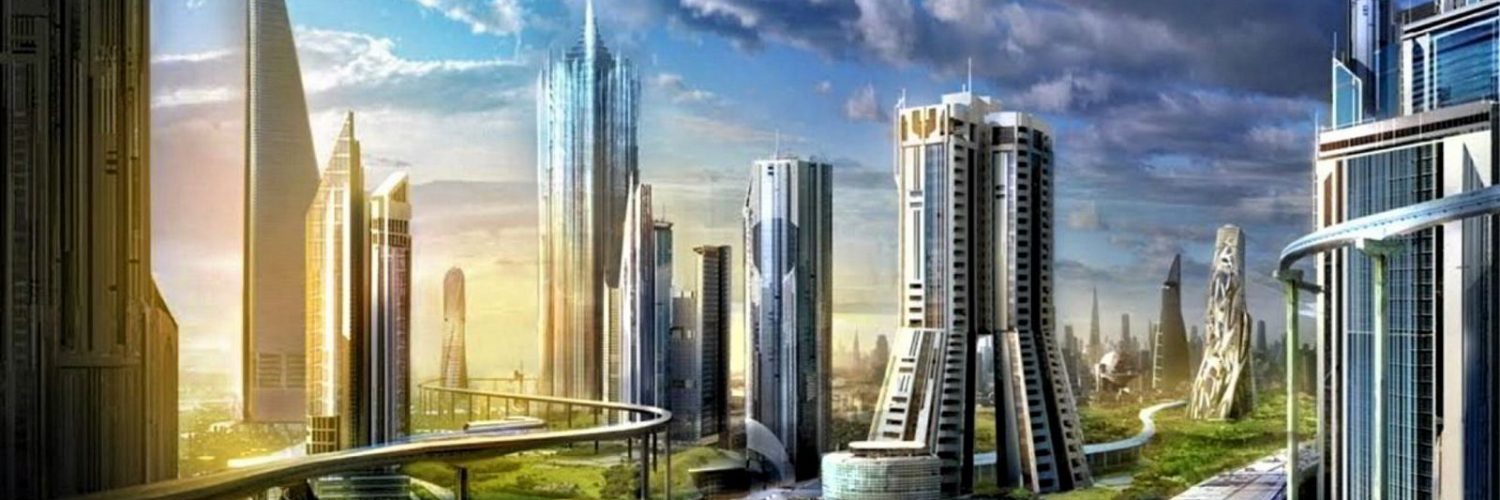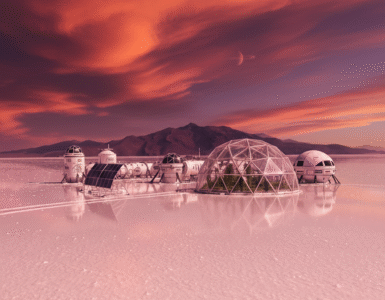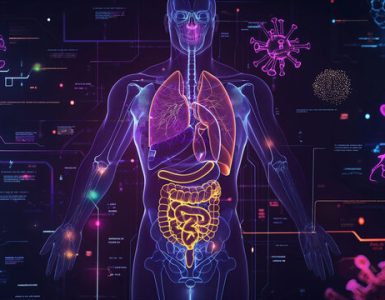By A’liya Spinner
The Daily Commute
The bus rumbled beneath Maya’s feet, jostling even more on every turn than it usually did. The city had switched to a new bioethanol, and it didn’t run quite as smoothly. But it was better for the engines, they said, and kept the buses running longer. The passengers tried not to complain— many remembered when there had been no reliable buses at all.
A particularly large bump in the road almost tipped Maya into the man beside her. With a hurried apology, she adjusted herself and tightened her grip on the pole, trying to minimize her contact with the strangers around her. The bus was particularly crowded today, as the college students began to move back into town for the fall semester and they acquainted themselves with the extensive public transit system and their newfound freedom to explore the bustling city.
Buildings passed quickly as the bus kept a good pace; the trees were beginning to turn orange and red with the approach of autumn. It was her favorite time of year, and she would frequently walk between the towering apartments and oak trees just to admire the changing leaves and marvel at how seamlessly they flowed together. She could find everything she needed under that shaded urban canopy.
Abruptly, the bus came to a stop in the middle of the road, rocking Maya back on her heels. Heads lifted from their books or phones in confusion, looking out of the windows to see traffic had similarly halted all around them. Up ahead, bright orange barriers blocked the street. A handful of construction workers and their robotic assistants were attempting to redirect the confused cluster of buses and cars down a side street.
“What happened?” Maya asked aloud, as curious murmurs began around her.
“Looks like some trees were knocked from the terraces of a big office building in the storm last night,” a man beside her summarized from a news alert that flashed across the screen of his phone. “They’re working on getting them replanted or cleared, but until then, the block is closed to vehicular traffic.”
There was a series of groans from the people aboard, particularly the students, full of energy and places to be. Maya herself felt very little in the way of disappointment; she remembered when the roads were always open, and it had come at the expense of the air, which was hot and choked with exhaust, and the loss of pedestrian pathways in the city. Younger citizens had few or only foggy memories of those days. Maya supposed it was good that they still found things worth improving in the system, so that her generation did not get complacent with the things that could still be made even better than they were now.
As the vehicles around them began to clear, the bus started up again, making a slow and jostling turn down along its new route. As it passed the blockade, Maya caught a glimpse of a massive crane, lifting a young, fallen tree up into the air and towards the high terraces of the vertical forest. She hoped it could be replanted. Trees had become the symbol of the city’s resilience, growing alongside the infrastructure, keeping the air cool and clean and sheltered from violent weather.
“This should be a short detour,” the bus driver called over the grumble of the engine and murmuring of passengers. “Five minutes, maybe. We’ll get back on track and get you guys where you need to be.”
There was a small, playful cheer from the passengers before they resumed their previous transitory activities. Maya joined them, grateful to live in a place where such a quick fix was possible, as the colorful leaves of the forested city became a blur beyond the windows.
Cities of the Future
In 2017, the Saudi Arabian Crown Prince Mohammed bin Salman announced plans for “NEOM”, an entirely new city, tourist destination, and desalination site spread across fifty islands in the Red Sea. This massive project is largely aimed at reducing Saudi Arabia’s economic dependence on the oil trade by diversifying their sources of income, as well as to combat the region’s extreme water shortages. But it also represents the possible future of architectural innovation, because with an entirely new city also comes new technologies and standards in ecological sustainability.
The builders of NEOM have already announced their intent to stay environmentally friendly; Saudi Arabia is partnering with French and Japanese energy companies to devise a method of running the new desalination facility completely on clean energy. Though the exact type of energy has yet to be determined (possibly geothermal), this could be a major step towards greener energy in the region— especially because the desalination facility is projected to produce 500,000 cubic meters of water every day by 2024. The Saudi Arabian government additionally signed an environmental agreement to protect marine ecosystems and coral reefs around the proposed cities and beach destinations of NEOM, as well as establish binding controls to reduce other forms of pollution.
Another part of the NEOM project— and much more ambitious than desalination or tourist attractions— is “The Line”, a proposed, “indoor” city that would stretch for 106 miles. Saudi Arabia’s press release claimed that The Line would have no cars, roads, or emissions, and operate completely on renewable energy, with electric rails connecting its sections together. Artificial intelligence and robot aids are also promised to the future residents of The Line, which Crown Prince bin Salman claims will be a beacon of technological progress and sustainability, while “challenging the traditional flat, horizontal city”. Of course, The Line has been met with substantial criticism, both because of Saudi Arabia’s regressive cultural and social policies, particularly for women and migrant workers, and for overpromising the capabilities of modern technology. Many architects do not believe The Line is feasible at all, calling it a science-fiction jumble of ideas and overreliance on technology to solve humanity’s problems.
Yet as fantastical and ambitious as it may be, The Line is founded on a very real, recent practice being observed all around the world: building new cities from scratch. Hundreds of new cities— physically separated from other urban centers, and fully planned from the ground up— have appeared in the last few decades, largely in China, Southeast Asia, and Africa. These cities become fully functional entities, with governments, work districts, residencies, and economies of their own, as well as acting as large financial boosts for the country that built them. Selling land to developers, inviting businesses to open shops, and attracting wealthy citizens to settle in a “better designed” city, with more efficient roads and modern luxuries in abundance, is a profitable venture, especially for nations looking to woo foreign investors and keep populations from migrating elsewhere.
But these cities can be more than burgeoning economic epicenters— they also represent the opportunity to design infrastructure with sustainability in mind. And many of them are doing just that. Gracefield Island, for instance, is a city being built from the ground up in Nigeria, and their mission statement centers sustainability and environmental coexistence. The builders of Gracefield Island claim that the infrastructure will contain underground drainage systems, stormwater conservation receptacles, walkable and bike-friendly roads, and limits to high-pollutant vehicles and appliances in households. Designing cities from scratch gives architectects the chance to take sustainable building to the fullest; Danish architect Bjarke Ingels is designing a metropolis to eventually house five million in empty swaths of land in either Idaho or Nevada. This city will be constructed with sustainable building materials, and prioritize pedestrian-friendly roadways. Bjarke acknowledges that the technology of our time cannot create a wasteless utopia, but he still hopes that this city— and other, new cities like it— will act as examples of sustainability in architecture around the world.
An Ecological Retrofit
Moving the world’s population from our current urban centers to new, eco-conscious cities is not remotely feasible, nor should it be the ultimate ideal. Cities built entirely from scratch have the advantage of modern planning and technologies that ancient metropolises like Cairo— originally built to only house one million people, not the ten million it has today— do not, making them easier to construct with carbon-reduction and water retention in mind. But our modern cities are not lost causes; with intelligent retrofitting and investment, our urban centers are crucial tools in preventing resource scarcity, over-rapid urbanization, and climate change.
The most obvious improvement we can make to preexisting cities is the expansion or creation of “green spaces”. Public parks, lawns curated with native and diverse species, and increased plant life in concrete jungles reduce net carbon emissions and also assist in water drainage, reducing risks of flooding in areas impacted by global warming. Some cities, such as Milan, are integrating vegetation into their space by growing trees, bushes, and other plants on vertical “forests”, creating residential and public skyscrapers that lower temperatures, absorb carbon dioxide, and act as natural noise reduction. The installation was so popular and effective that districts in China, Sweden, and the Netherlands commissioned the original architect to build more forested skyscrapers around the world.
Another strategy to improve the carbon emissions and livability of our current cities is underway in Melbourne: transforming the suburbs into their own, walkable communities. With better public transportation, safer pedestrian and bicycle paths, and more support for local businesses, Melbourne hopes to make their residential districts into functional communities of their own, with the schools, jobs, and services that most people would need on the day-to-day. Not only does this reduce carbon emissions from constant car traffic, it also encourages life and family in the suburbs, where natural plantlife can more easily be cultivated. Not all occupations or stores can be relocated to walkable suburbs, of course, but encouraging the development of pedestrian-friendly infrastructure, and supporting access to local businesses near neighborhoods is a positive step to adapting our current cities to be more environmentally friendly.
On the Horizon
New technologies around urban sustainability are being devised and implemented every day. Particularly, many innovators are looking for ways to use renewable energy to power our large cities and vehicles. For example, successful prototypes of “floating” wind turbines— turbines anchored to the deep seafloor by a few cables, rather than huge, concrete bases— have sparked interest in countries like Japan, where lack of usable shallow water and dense urban populations has made other forms of wind energy more difficult. In addition, Irish startup Seabased is designing robust hydroelectric buoys that generate energy from the movement of oceanic currents, meant to supplement or replace wind power in coastal communities.
Wind turbines are also working their way into cities and suburban communities, by generating energy from the breeze of passing cars. While these small and recyclable roadside wind turbines generate less power than the much larger floating variety, they can be used to cleanly power traffic lights, road signs, and, in the case of high-traffic areas, local buildings. Though our overreliance on private vehicles is something climate activists hope to decrease in urban environments, collecting energy from everyday traffic will be a welcome source of renewable electricity for cities.
Then there’s the modernization of solar energy, one of the most prolific and well-known forms of renewable energy. A Dutch company known as Lusoco is developing a solar concentrating material that can be used as glass, able to be integrated into buildings and automotives without sacrificing functionality or aesthetics. The polymers are also coated with luminescent dyes that cause them to glow, allowing for self-sustaining signage or lighting in isolated locations. Another manufacturer, Norwegian Crystals, is making solar panels out of microcrystalline silicon ingots that greatly reduce the carbon footprint of the photovoltaics they create; as an added bonus, all of their production is powered by clean, hydroelectric energy. When finished, these solar panels will address a major obstacle in the mass-production of solar energy: that they are inefficient to make and difficult to recycle, something many companies are beginning to address. Fortunately for older models, advancements in photovoltaic recycling are being made every day, and the growing practice of reusing many components from non-functioning panels reduces the need for expensive or freshly-mined components in the next generation.
Finally, biofuel technology continues to develop as a promising alternative to many pollutants, particularly the fuels used not only in cars, but planes and seafaring vessels, as well. Phycobloom, for example, is an ambitious company that claims they will someday be able to replace fossil fuels with their algae-derived oil. Unlike other algae-oil companies, which have to crush and kill their crops to obtain oil— an expensive and slow process that prevents algae-oil from being a reliable fuel source— Phycobloom’s genetically-engineered algae release oils into their surroundings, where it can be harvested without harming the growing crop. As an added bonus, algae grows with only sunlight, water, and carbon dioxide, releasing oxygen and fuel as a byproduct. And this is only one of the biofuel companies working to create a sustainable replacement for fossil fuels. Bioethanol is a huge industry of startups and innovations, deriving bioethanol from sugarcane, agricultural residues, and municipal waste.
Group Effort
Sustainable living is neither an individual nor governmental responsibility alone. People living in urban environments can do their unique part in the effort by installing solar panels or buying from clean energy sources, planting native species and trees in their gardens, and investing in electric vehicles or public transportations. Meanwhile, cities and nations must also make the effort to fund and encourage sustainable energy sources, update infrastructure to be more walkable and recyclable, and protect and expand existing green spaces. This must also be combined with a global effort to reduce fossil fuel use and respect the ecological hotspots and biodiversity around our burgeoning urban sprawl. It may seem overwhelming to consider sustainable living in the current world, but even one environmentally-friendly change to your life has a positive impact on your local neighborhood, and can help become the foundation that more complex sustainability is built upon.





